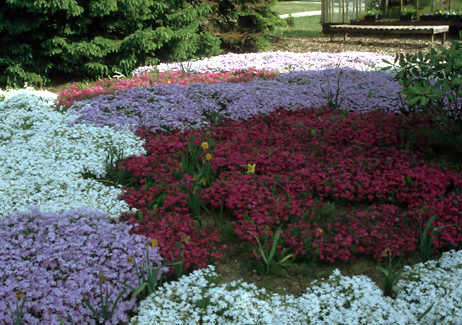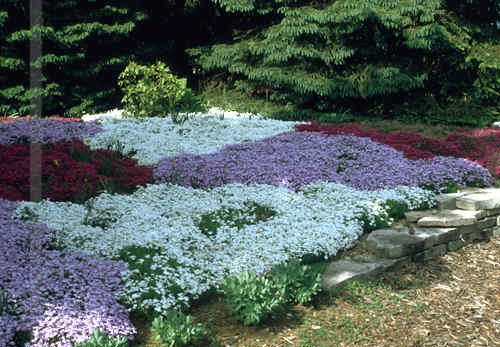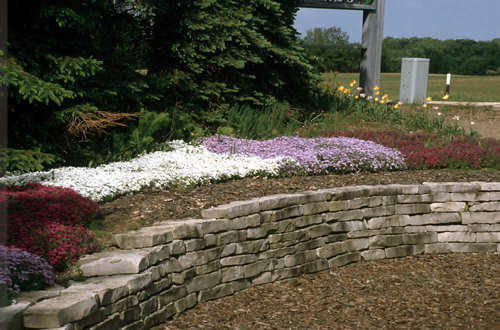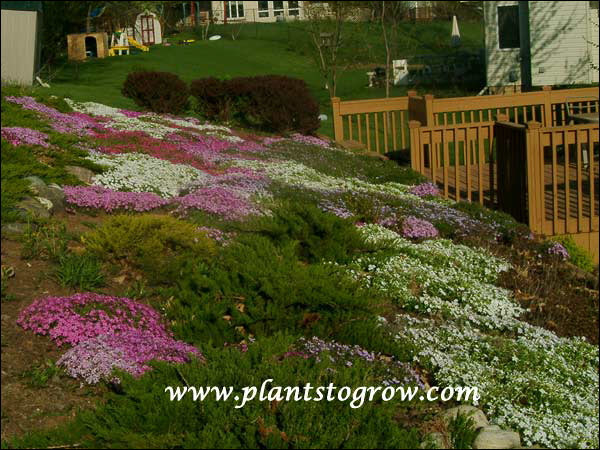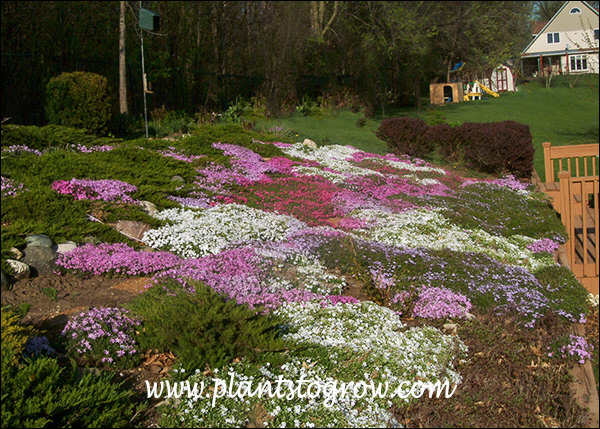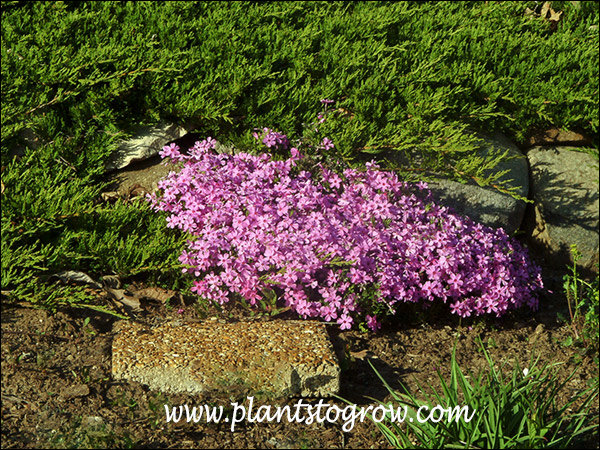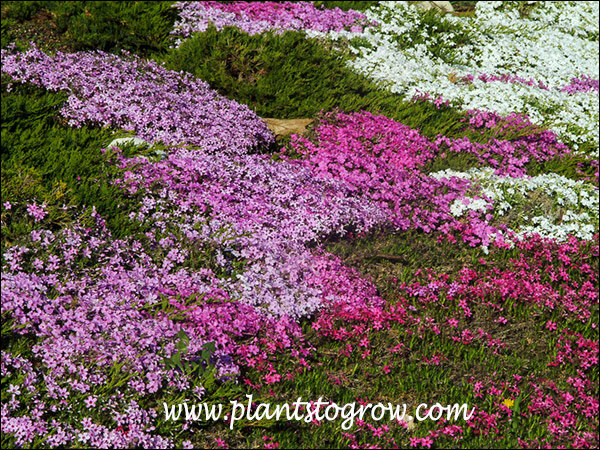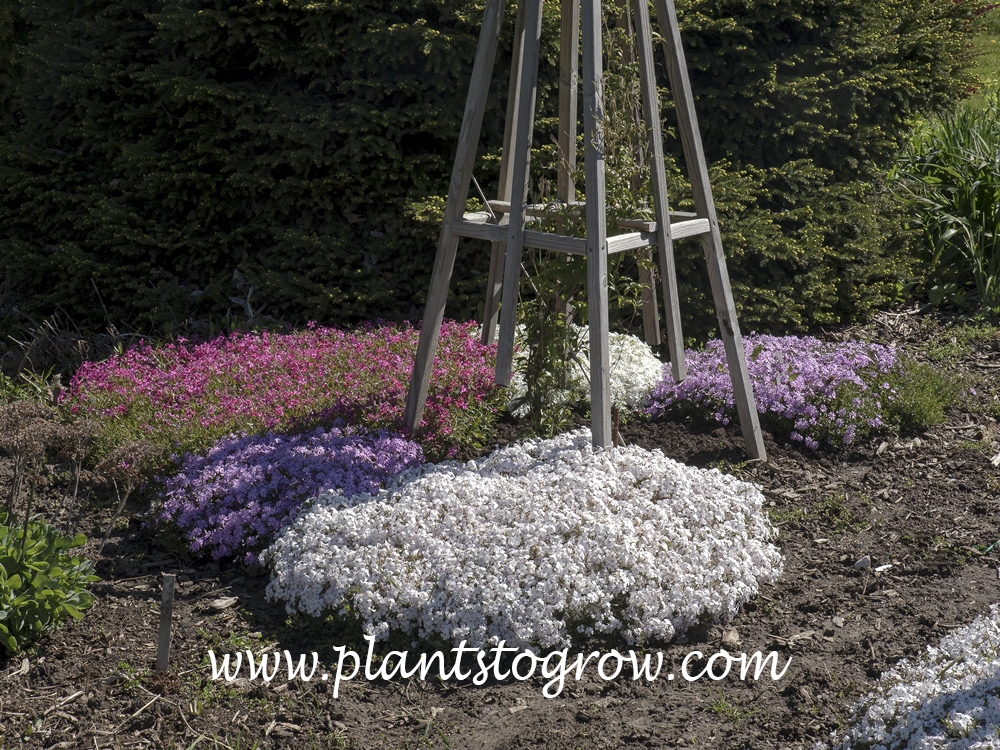| Description | Creeping Phlox (Phlox subulata) is as easy to grow group of late April to early May blooming perennials. Mat forming and may spread over two feet. Prefers to be grown in the full sun. |
|---|---|
| Plant Type | Perennials Hardy, Site author's observations |
| Hardiness Zone | 2-9 |
| Sunlight | prefers full sun, will tolerate some shade, flowering is best in full sun |
| Moisture | average to dry |
| Soil & Site | average, dry, well drained, ph neutral to alkaline |
| Flowers | Produces masses of white, pink, red, white or pink and white striped flowers in late April to early May lasting for around 2 weeks or more. Phlox growing on slopes or hillsides facing directly to the spring sun will bloom 2 weeks early. |
| Leaves | The foliage is a low growing mat of moss-like foliage. |
| Dimensions | Low growing, getting only around 4" tall and spreading over 24". Plant 12-18" on center. |
| Maintenance | If Creeping Phlox is placed to close to a sidewalk, patio, etc. it will creep into this area. Most people will shear it straight on the edges leaving a rough brown edge. A way to avoid this ugly look is to lift the edges of the plant up and cut the brown underside of the plant leaving a layer of growing foliage on the top to fill in. Than take this foliage and feather it back with a pruning shear or scissors. This works with Creeping Phlox because it tends to grow in layers with the new growth creeping over the older growth. When grass or weed start growing through the foliage, lift the plant and pull the weeds from underneath. Once the Phlox is established the weed problem will be minimal. A light shearing after bloom will incourage compact growth |
| Propagation | cuttings or division in the spring |
| Misc Facts | Native to America first sent to England in 1745 by John Bartram. The name "Moss Pink" comes from the foliage (moss like) and the pink color of the flowers. |
| Author's Notes | I have been growing various cultivars of Creeping Phlox for over 30 years. They are hardy and easy to grow. |
| Notes & Reference | #04-Herbaceous Perennial Plants (Allan Armitage), #06-Perennials for the American Gardens (Ruth Rodgers Clausen and Nicolas H Ekstrom) |

Cart
